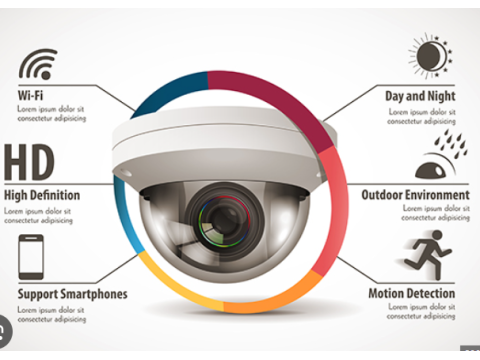IP Cameras as Network Devices
IP cameras are revolutionary surveillance tools that integrate seamlessly into networks, offering flexibility and scalability for modern security systems. Unlike analog cameras, each IP camera operates as a unique network device with its own IP address, enabling direct communication with other devices over Ethernet or WiFi.
Key Features of Networked IP Cameras
Accessibility:
With an IP camera, you can:- View live video streams.
- Configure camera settings remotely.
For added security, you can limit access to authorized users.
Data Transmission Factors:
The speed and quality of video transmission depend on:- Resolution: Higher resolution increases bandwidth usage.
- Compression Format: Options include MJPEG, MPEG-4, and H.264.
- Network Bandwidth: Ethernet supports speeds up to 1 Gbps, while WiFi typically maxes out at 11 Mbps.
- Processing Power: Receiving devices must handle the incoming video without delays.
Network Protocols Used by IP Cameras
RTSP (Real-Time Streaming Protocol):
Manages video streams and controls functions like playback and live viewing. RTSP doesn’t compress or transport data but coordinates with other protocols like TCP or UDP.TCP (Transmission Control Protocol):
Guarantees reliable data transmission with no packet loss. While robust, it’s slower than UDP.UDP (User Datagram Protocol):
Ideal for high-speed video feeds where minor data loss is acceptable. It’s faster but less reliable than TCP.RTP (Real-Time Transport Protocol):
Optimized for real-time video streaming. Each packet is timestamped, ensuring proper sequence playback. RTP works alongside RTCP, which manages delivery quality.
ONVIF Compatibility
The ONVIF standard ensures interoperability between IP cameras and other devices, regardless of the manufacturer. Over 400 organizations adhere to ONVIF, making it a key consideration when choosing cameras and network equipment. Look for ONVIF support in product specifications to simplify integration.
Compression Formats for IP Cameras
MJPEG (Motion JPEG):
- Works by compressing each frame individually.
- Simple and reliable, but storage-intensive.
- Suitable for low-budget setups or static scenes.
MPEG-4:
- Compresses by predicting motion between frames.
- Ideal for low-bandwidth networks.
H.264:
- Most advanced and efficient compression format.
- Reduces bandwidth requirements by up to 50% compared to MPEG-4.
- Demands higher processing power for encoding and decoding.
Choosing the Right IP Camera
To optimize your surveillance system:
- Ensure all devices support the same network protocols.
- Use cameras with compatible compression formats for your storage and bandwidth needs.
- Select ONVIF-compliant equipment to minimize compatibility issues.
Explore high-quality IP cameras and network solutions at safsale.com

